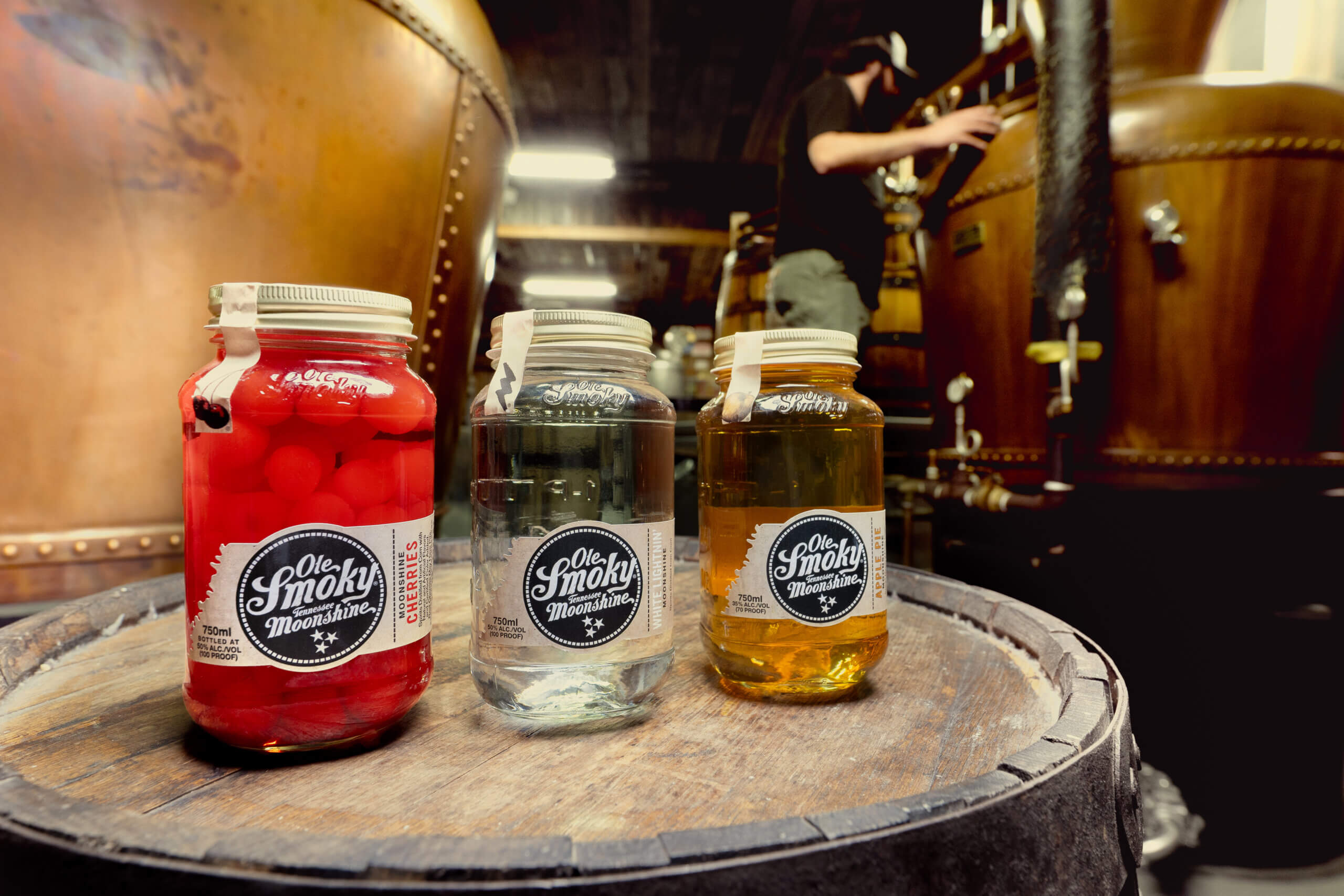Everything You Need to Know About Sherry
By Chilled Magazine
In the past few years, sherry has stepped into the spotlight.
What was once widely considered a dusty bottle on the backbar is now becoming a star libation as bartenders across the country use it in cocktails and offer sherry flights to curious customers. But to really appreciate sherry, it helps to know how the expression is made and what to expect when sampling the category’s different styles.
So we sat down with Diana Novak, the National Director of Spirits Education for Palm Bay International. Palm Bay has a wide variety of spirit brands in their portfolio, including Williams & Humbert, which has been making sherry since 1877. Here, Novak gives us a crash course on Sherry 101 so we can better understand and learn how to properly drink this amazing fortified wine.

Sherry Being Sampled
A lot of people still associate sherry with a cooking wine or old-school drink that their grandparents imbibed. Could you explain to us what sherry actually is? How is it made?
It’s long been associated with the sweet wine that our nanas drank, nip by nip, and some know it only as a cooking wine. While those are both aspects of sherry as a category, there is so much more to this wine. Sherry is a fortified wine that comes from the southern region of Spain and may only be aged in three towns that make up the Sherry Triangle—Jerez de la Frontera, Sanlucar and El Puerto.
Though sherry has a variety of expressions within the wine category, there are only three white grapes that are allowed for the production—Palomino, the most widely used and planted grape in the region; Pedro Ximenez, known for its dark coloring and sweet, raisin-like flavor profile; and Moscatel, a lighter sweet grape that has soft notes of honey. Sherry can range from zero grams of residual sugar per liter to upwards of 400 grams based on the grapes used during the course of aging.
Sherry is aged by a criadera and solera system. This is a method based on the principle that the youngest wine may be enriched when it’s added to the eldest, which is essentially fractional blending. The criaderas are known as the nursery, while the solera (meaning earth) is the oldest of all the sherry within the aging system and is the only level in which sherry may be extracted for bottling. Aging is done in Botas, which are large American oak casks with a 500-600 liter capacity. They must be well-seasoned with young wines and musts for many years before they are used in the criadera system.
After harvesting and pressing the grapes, you begin to create your base wine. Sherry goes through two presses. The first is for biological aging, done under Flor. Flor is a yeast that develops as a thin veil atop the wine as it ages that prevents it from oxidizing, as long as it stays at 15 percent abv and has air to breathe. The second press is generally for Oloroso and oxidative aging. Oxidative aging means it is fortified right away and placed in a barrel filled to the top, as it will never see flor aging.
After the initial fermentation (generally up to 12 weeks), the wine will enter the sobratabla for each sherry expression. For example, if you wanted to create a Fino, it would have its own “wine of the year” that would consistently feed the criadera levels as the extractions are made. So if you are bottling Fino, you would take a percent from of all of your solera level casks and backfill with first criadera. You would then backfill the first criadera with a percent of the second criadera. And finally you would backfill the second criadera with the sobratabla.

Soleras Dry Stack
Sherry styles differ greatly in flavor. Could you talk about some of the different types of sherries produced by Williams & Humbert and what makes them unique?
Williams & Humbert started in 1877 and produces a wide array of sherries across all categories, as well as some unique small production offerings. Here in the United States, we have a full portfolio of sherries that range from a Pando Fino with zero grams of residual sugar to a 20 Year VOS (Very Old Sherry) Don Guido Pedro Ximenez that has 380 grams of residual sugar. Williams & Humbert is also the home of Drysack, which has been one of the most widely-known sherries for decades.
Drysack is a medium sherry, which means it is has a grape base of more than 93 percent Palomino with a small percentage of PX that increases the sugar content slightly. The Drysack expression is more than 110 years old, having first been produced in 1906, and is aged under flor for approximately six years. This is a unique expression because you have dryness with a slight touch of acidity that marries beautifully with the natural hazelnut and almond notes from the biologic aging of the Palomino grape. It finishes with a rounded touch of raisin and fig without being overly sweet, making it very versatile in both the beverage and culinary industries.
Canasta is a cream sherry, a category that starts with 115 grams of residual sugar. Canasta is aged approximately six years and has 132 grams of residual sugar. While there is a great deal of sweetness, there’s also acidity from the Palomino along with almond, fig, chocolate and raisin notes. You can find this sherry in nearly all the restaurants in Jerez.
Drysack 15 Year Oloroso is a vintage expression, which is very rare in sherry and also known as Añada. Since 1920, Williams & Humbert has put aside a bota of every vintage from the Alamo in Balbaina vineyard. These barrels have never been refreshed, and because of evaporation, these wines have gradually become concentrated and racked into successively smaller casks. You lose three to four percent of the cask to angel’s share during each year of aging, so the casks have to get smaller to maintain the integrity of sherry.

Williams & Hubert Exterior Bodegas
For people getting into sherry for the first time, how to do suggest serving the beverage?
I recommend to first think about your palate and what you might be eating. The general rule of thumb is to drink drier-style sherries—such as Fino, Manzanilla, Amontillado and Palo Cortado—as an aperitif. Usually styles like Olorosos, PX and cream sherries are reserved for a digestif. But sherries are not limited to the befores and afters of a meal. I was once told, “You should never drink sherry without a little food, but no meal is ever complete without the proper sherry.”
To serve sherry, a white wine glass is the perfect vessel for all expressions. For dry styles like Fino and Manzanilla, serve it very chilled. Wines such as Amontillado, Palo Cortado and often Oloroso should be served slightly below room temperature or slightly chilled. For sweeter wines like PX or Moscatel, you can serve at room temperature or with a slight chill, if you prefer.
What about in cocktails—how do different sherries pair well with other ingredients and flavors?
Sherry has long been incorporated into cocktails, most notably in the Sherry Cobbler. And as people are learning and discovering more about sherry, we are starting to see many more sherry incorporations in cocktails.
With the wide variety of flavor profiles within the category, there may truly be a sherry partner for every spirit. To understand how different sherry expressions may enhance and work with spirits, I find it’s easiest to begin working with the sherry as a modifier in traditional builds for classic cocktails. You can start by substituting sherry for a traditional modifier, such as vermouth. Identify the flavor profile of the spirit you’re replacing and familiarize yourself with the flavor profiles of the sherries you have on hand.
Manzanilla and Fino can be used in place of dry vermouth, Olorosos can be used as a substitute for sweet vermouth, and Pedro Ximenez and Muscatel can be used in place of sweet liqueurs or even simple syrups. Drier sherry categories can easily be used as the base of a cocktail, which also makes the drink lower abv.
No matter if a sherry is used as a modifier or as the primary base, it will add a great deal of complexity and can balance bitter, citric and even sweet bold flavors. Finos generally work very well with bold spirits to add acidity, which is the case when it’s used in Martinis. Amontillado is a round, full-bodied expression with a bit of acidity and nuttiness, which works well in stirred, boozy cocktails. Palo Cortados can enhance a wide range of flavors, but its dryness, light acidity and well-rounded marzipan notes pair nicely with aged rums. Olorosos can be very versatile when working with stirred, bold cocktails, in shaken, sherry-forward cocktails, and as modifiers for a vast array of spirits. Creams, Moscatel and PX are complex sweetening agents that work with spirits that range from agave to whiskey and much of everything in between.
Start your sherry journey by visiting Williams & Humbert to learn more about their versatile expressions.










